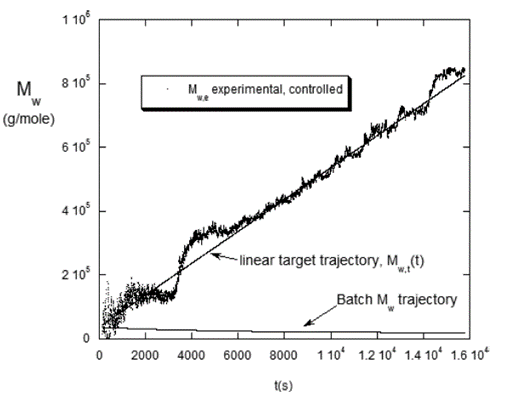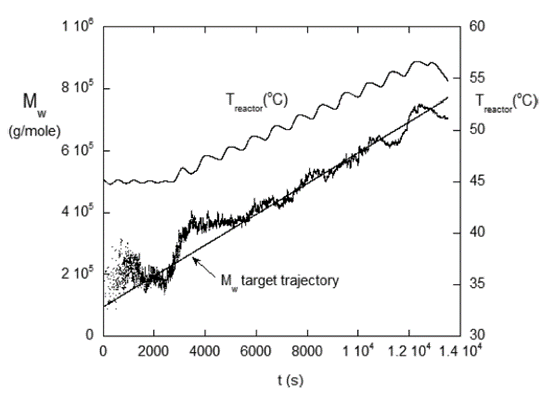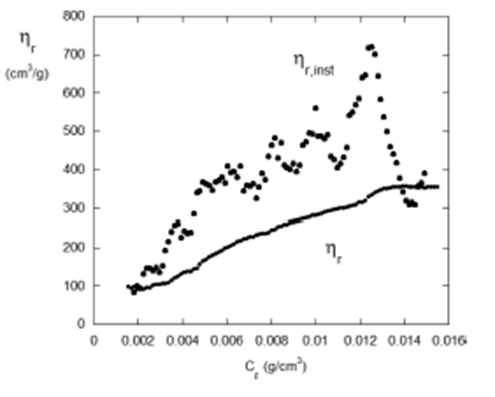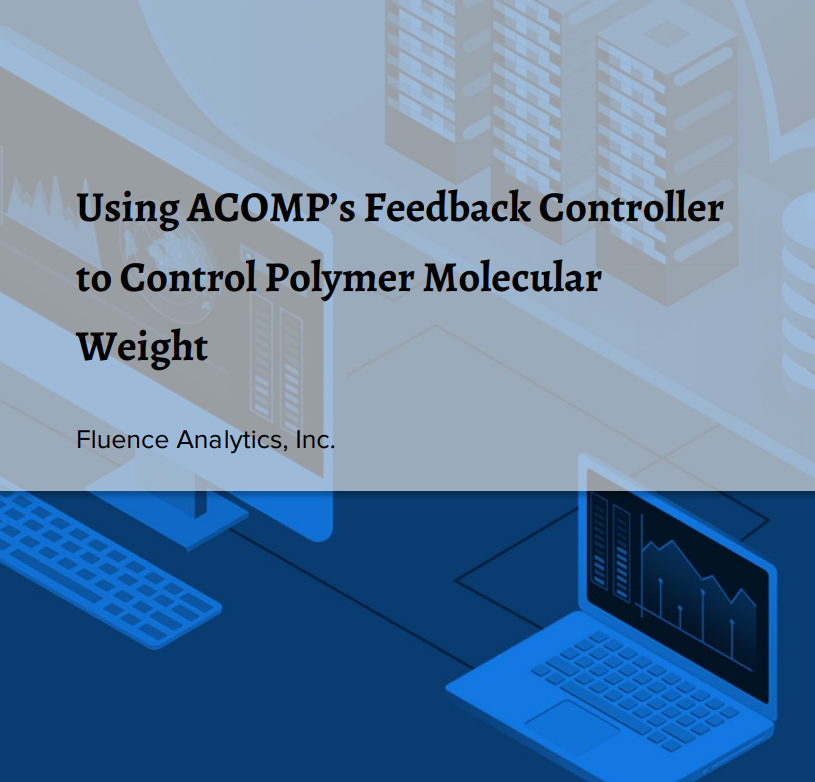Why this matters
ACOMP performs a continuous sampling of reactor contents and monitors polymer properties such as molecular weight, viscosity and monomer conversion or concentrations in real time. By integrating with an ACOMP feedback controller, these parameters can be directly controlled, something previously not possible in polymerizations. Using ACOMP in this manner for industrial applications can improve yields, reduce off-grade materials, and enable tighter product specifications, enhancing the ease of processing and end-use performance. Parameters like molecular weight can even be used to drive towards outcomes that do not occur in the absence of active control.
Overview
Automatic Continuous Online Monitoring of Polymerizations (ACOMP) is used to characterize real-time monomer and polymer concentration, reduced or intrinsic viscosity and weight-average molecular weight. The ACOMP system continuously and automatically extracts and conditions reactor samples, which are then diluted and run through a series of detectors: UV/Visible, differential refractive index, a custom viscometer, and Multi-Angle Light Scattering (MALS).
ACOMP is offered in two variations, for industrial and R&D applications. Industrial ACOMP, through its capability of monitoring polymerization reactions, yields benefits such as reduced cycle time in batch reactions, reduced transition material in continuous reactions, and product quality improvements.
In this technical note we will demonstrate the use of active feedback control with Lab ACOMP to directly control polymer molecular weight by adjusting the monomer feed into the reactor. It is even possible to synthesize molecules that do not form naturally under standard polymerization conditions. The controller is based on a feedback loop and consequently does not require a kinetic model.
Real-time Control of Polyacrylamide
In this example, Lab ACOMP, with a controller, was deployed to control the batch free radical polymerization of polyacrylamide. Figure 1 shows a linear target molecular weight trajectory with a slope of 50 g/mol/s Mw (= 180,000 Mw in one hour) for an isothermal reaction at 45°C. It should be noted that in an uncontrolled free radical batch reaction with first-order kinetics, the Mw is expected to decline exponentially as shown in the lower curve. Thus, using the ACOMP feedback controller enables the synthesis of a fundamentally new molecule with Mw up to roughly 800,000. A priori, such a molecule would be expected to have interesting properties compared to the low molecular weight polyacrylamides prepared under standard conditions, such as higher tensile strength, impact resistance, tear strength and chemical resistance.

Figure 2 shows the same linear target molecular weight with a slope of 50 g/mol/s as in Figure 1 while simultaneously increasing temperature linearly (controlled separately) from 45 to 57°C. It can be seen that despite the constantly changing reaction conditions, the ACOMP feedback controller automatically compensates for the effect of temperature on the reaction, allowing the polymerization to track to the desired profile. Due to the higher temperature, it is difficult to increase the Mw much above 600,000 in this case. This experiment shows how ACOMP can evaluate the effect of process conditions on polymer properties.

In certain instances, it may not be feasible to use light scattering to obtain Mw (for example due to scattering in an emulsion polymer system). In such instances, the ACOMP controller can control reduced or intrinsic viscosity* using ACOMP’s customized viscosity detector. The reduced viscosity correlates with the viscosity-average rather than the weight-average molecular weight. Figure 3 shows curves for the instantaneous as well as the cumulative value of the reduced viscosity for the same reaction shown in Figure 1. ACOMP measures cumulative values that are sampled from the reactor, and these can be converted to instantaneous values of viscosity in the polymer produced by taking the differential versus time or, in this instance, concentration. The dotted line shows that due to the intervention of the controller the instantaneous values fluctuate widely, so for this polymer a broad molecular weight distribution would be observed. This would very likely have effects on the processing properties of the polymer.

Conclusion
This technical note demonstrates the ability of the Lab ACOMP controller to meet, in this example, the very challenging objective of controlling molecular weight (Mw) to a linearly moving setpoint. The controller enabled an increase in Mw that goes against the usual trend of first-order reaction kinetics! Clearly, the ability to control to a fixed Mw setpoint is a subset of this broader case which would be much easier to do.
The control function is not yet available on industrial ACOMP. However, because industrial ACOMP monitors Mw (or viscosity) in real time, the data provided by ACOMP can be seamlessly integrated with existing advanced control systems to control these parameters. Thus, using ACOMP allows for improved control of polymer properties in industrial applications, which can improve yields, reduce off-grade materials, and tighten product specifications, enhancing the ease of processing and end-use performance.


